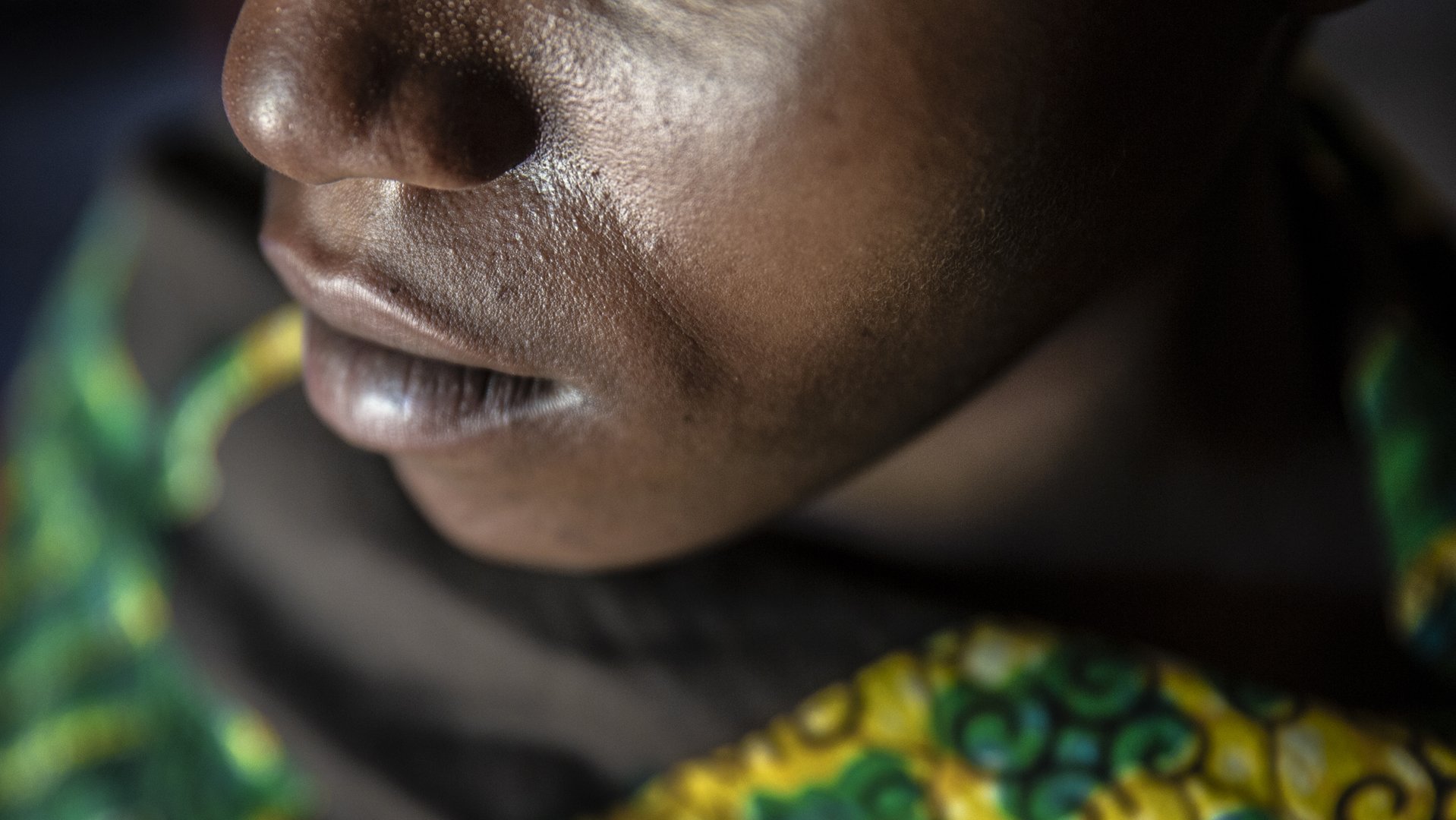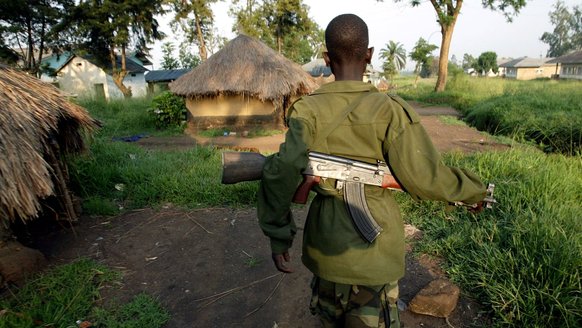Driving our Care System forward: the STRETCH intervention
March 11, 2020

Our Integrated Care System
War Child is developing an integrated Care System to ensure the provision and increased scale of quality care and support to conflict-affected children around the world.
This Care System is built around a child’s social environment - which means that we work with their caregivers, schools and the communities children live in. This ‘ecological’ approach ultimately contribute to ensuring the increased resilience and improved psychosocial well-being of conflict-affected children. However stigma hampers access to services such - as those that War Child offers - and can be a barrier to equitable participation in civil society more broadly.
To address this we are establishing a stigma reduction intervention - STRETCH. To develop our approach, we conducted a systematic review of stigma reduction strategies in low- and middle- income countries. This allowed us to learn about the potential of existing approaches and whether they showed promising results.
Our review concluded that children are under-represented in stigma reduction strategies, despite their promising potential. The findings of this study are now being incorporated into our STRETCH intervention - which will be assessed this year in Uganda.
Scientific publication and systematic review
By submitting our research to scientific manuals, we share our knowledge and learnings on what works – and what doesn’t - for children and their families affected by armed conflict. The published articles are peer-reviewed by thematic experts, in order to improve the quality of the evidence. You can access the full journal article on Social Science and Medicine, volume 246.
Systematic review is a form of scientific analysis. Within this analysis, scientific literature is searched in a systematic way to come to conclusions about the body of work on a specific topic. The process must be very clear, in order that other scientists can follow the same steps. Databases of journals are selected and criteria for the search are predefined. Every step of the search strategy and findings is documented. The results are described and conclusions are made about the findings.

What is stigma?
Stigma enforces social norms and makes people vulnerable when they differ from them. It is a global phenomenon, occurring both in high-income and low- and middle-income countries (LMIC). Stigma as a concept was first described by Goffman (1963) as a discreditable or undesirable attribute. It has more recently become understood as a social process of labelling, stereotyping, and prejudice causing separation, devaluation, and discrimination (Link and Phelan, 2001).
People can be stigmatized when they are perceived to be different from local norms or societal ideals. Stigma is a complicated concept as it occurs in many forms. Many theorists and researchers have tried to define stigma and its properties. There are also different ways to frame stigma. These forms have been categorised in action-oriented and experiential stigma (Pescosolido and Martin, 2015).
Stigma has profound negative impact on both physical and psychosocial wellbeing. Living with stigma means you have a higher risk of exposure to violence and discrimination on both interpersonal and structural levels. You can also stigmatise yourself and experience low self-esteem as a result.
Aims of the study
The main aim of the review was to compile and assess strategies of stigma reduction approaches in low- and middle-income countries (LMIC). The purpose of this is to understand what is done to reduce child and adolescent stigma or the impact of stigma on them. We compared this to interventions solely targeting adults to draw comparison between the groups.
Methodology
Studies were sought in eight databases and three Custom Google Search Tools, bringing up thousands of hits. More detail is available in the article below. Search terms were pre-defined and categorised in the concepts of (a) stigma, (b) intervention, and (c) LMIC setting.
Altogether 3,492 unique studies were identified. After going through the review criteria, 61 articles in total were included. Although the search had no date limitations, the articles in the review were published within 2002–2018.

What we learnt
In total, 77 per cent of the articles reviewed focused solely on adults. Just 14 per cent of the articles included children - and children were usually in mixed groups with adults. We really don’t know enough about reducing stigma in children living in low- and middle-income countries. This is alarming considering the need to protect children from prejudice and to raise them without passing down harmful stereotypes of others. Stigma can impact on opportunities for a lifetime.
HIV/AIDS and mental illness were the main sources of stigma addressed in both child and adult interventions. A lack of attention is paid to other sources of stigmatization related to non-medicalized issues. The authors of this review recommend that the scientific community goes beyond HIV/AIDS and mental health perspectives to focus on other characteristics that are subject to stigma, particularly from an intersectional perspective.
The review demonstrates that for both adult and child-only groups, education-based stigma reduction strategies in the community were most commonly used. Education-based approaches combined with contact strategies have been identified to be the currently most promising approaches to tackle stigma – in particular public stigma (Birbeck, 2006; Cross, 2006).
Contact strategies are a method whereby people who experience stigma participate in activities with people who do not experience that particular stigma. This finding emphasizes the need to combine learning about the stigmatized condition and the need to know people who experience that stigma personally.
This review shows that interventions used were most commonly short, with the majority lasting a day or less. Only fifteen per cent of adult-focused interventions (and no child-focused interventions at all) were medium-term in length – lasting between one week and one month. Just one child-focused intervention lasted between one and two months, with none longer than this. Evidence from an earlier review (Clement et al., 2013) suggests that the most effective interventions are those that are more intensive and the authors recommend a longer and more in-depth intervention procedure.
The review found that professionals typically delivered the interventions in the strategies reviewed. In LMIC contexts, where the availability professionals might be scarce due to a lack of resources or high levels of inequality, it could improve intervention sustainability and reach to incorporate task-shifting and task-sharing experiences, as spearheaded by the mental health field. Task-shifting means that the interventions are delivered by non-professionals in the community, instead of by professionals. Implementation can also be facilitated by channels such as printed, movie-based or web-based materials which are easier to replicate. This was the most common delivery form for child-focused interventions.
Because stigmatisation is a societal process engrained within the community at individual, interpersonal, organisational, social and institutional levels, researchers have long recognised the importance of addressing stigma at multiple socio-ecological levels (Rao, 2019, Link and Phelan, 2001). The strategies identified within this review demonstrated that the majority of interventions were implemented at one socio-ecological level. However, it has been found that stigma reduction at multiple levels can improve intervention outcomes (Richman and Hatzenbuehler, 2014). Only 29 per cent of all adult-focused interventions - and just 24 per cent of child-focused interventions – in the review worked across two or more socio-ecological levels, even though it is accepted
Only two interventions in the review were replication studies. This means that the other interventions in the review were all studied only once. A lack of replication is a broader problem within social sciences – a problem that typically leads to an absence of robust evidence. Conclusions are drawn on studies with small samples or non-validated measures, and generalizations can’t be made to other contexts different from the study setting. Researchers are therefore urged to conduct replication studies of promising interventions and strengthen research quality.

Conclusion
This review compared stigma reduction strategies across stigmatised groups in low- and middle-income countries, specifically highlighting stigma reduction interventions that targeted children and adolescents. The authors conclude that children remain an under-addressed target group in stigma reduction interventions. This is a significant research failing - as children who are facing stigma merit more attention.
To advance work in stigma reduction, War Child argues for an increase in evidence-based stigma reduction interventions, consisting of strategies at multiple socio-ecological levels, which are more intense and delivered by non-professionals.
Our stigma reduction intervention STRETCH has been developed with these learnings in mind.
If you would like to get in touch, please contact Kim Hartog. The article is available on request, and we are always interested in finding ways to collaborate to end stigma.
